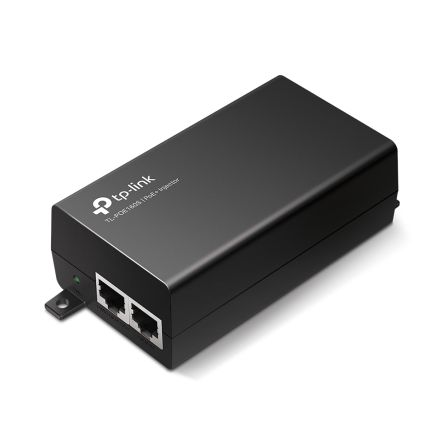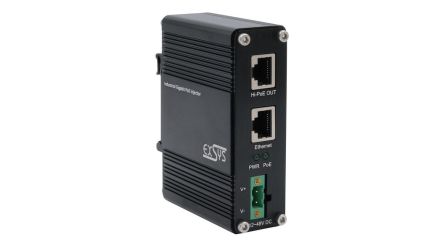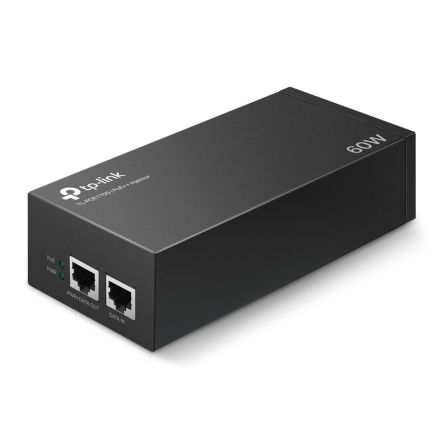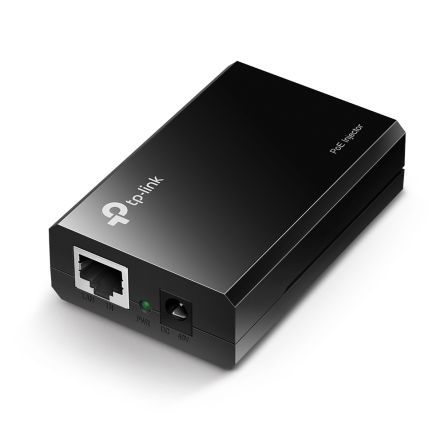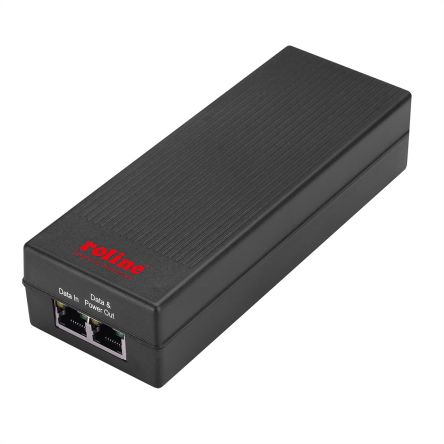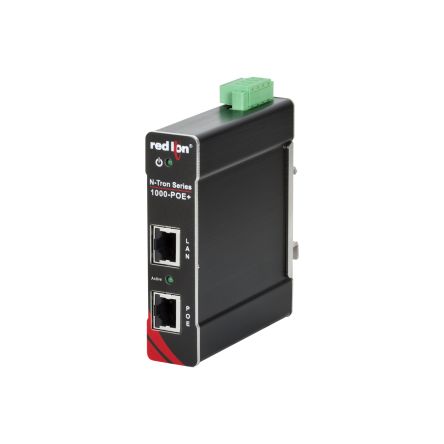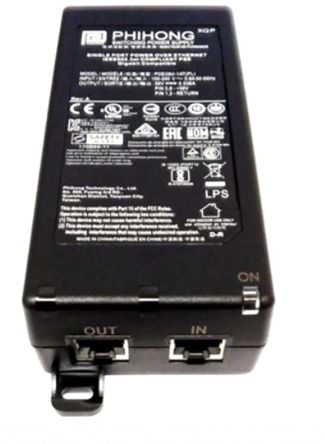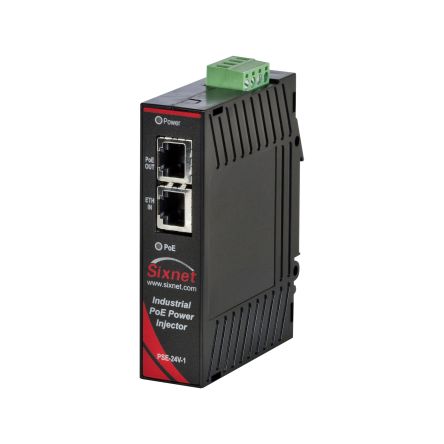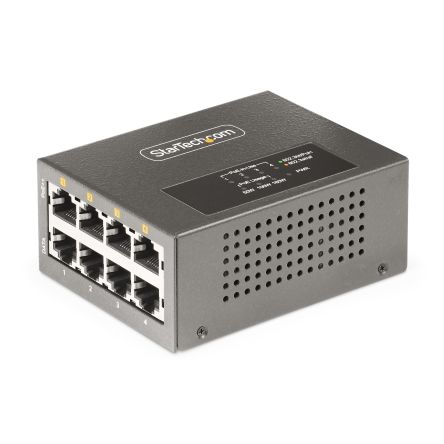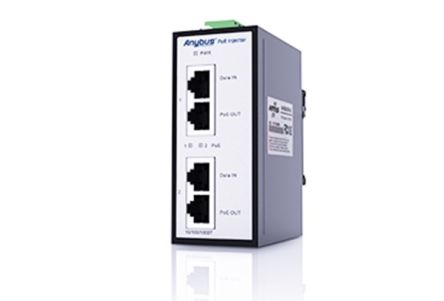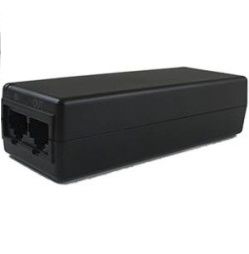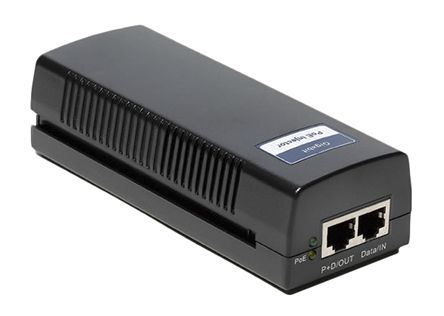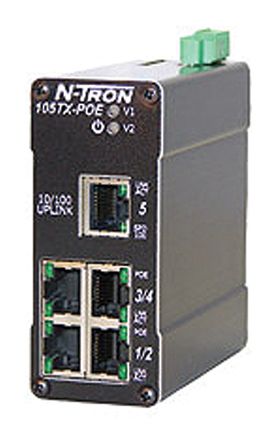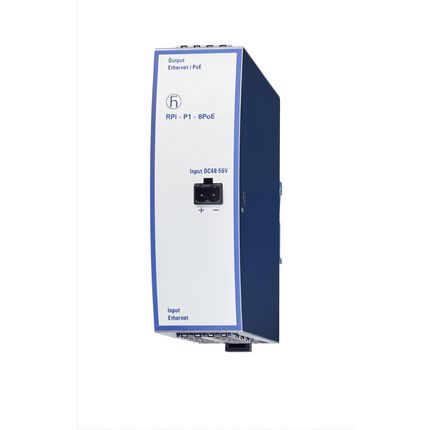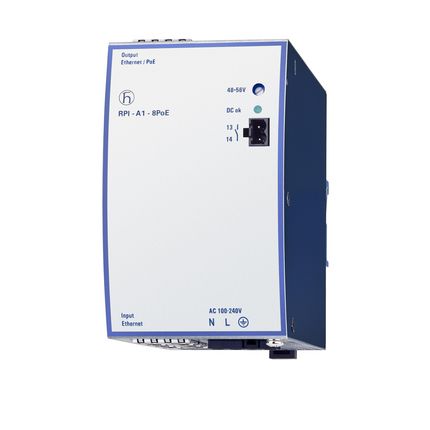- Automation & Control Gear
- Cables & Wires
- Enclosures & Server Racks
- Fuses & Circuit Breakers
- HVAC, Fans & Thermal Management
- Lighting
- Relays & Signal Conditioning
- Switches
- Batteries & Chargers
- Connectors
- Displays & Optoelectronics
- ESD Control, Cleanroom & PCB Prototyping
- Passive Components
- Power Supplies & Transformers
- Raspberry Pi, Arduino, ROCK, STEM Education & Development Tools
- Semiconductors
PoE Injectors
Power over Ethernet (PoE) injectors are devices used in computer networking to supply power to PoE-enabled devices over an Ethernet cable. PoE technology allows both power and data to be transmitted over a single Ethernet cable, eliminating the need for separate power cables for devices such as IP cameras, wireless access points, VoIP phones, and other network devices.
A PoE injector is typically used when a network switch or router does not have built-in PoE capabilities. It injects power into the Ethernet cable, allowing the connected PoE device to receive both power and data from the same cable. The injector is connected between the network switch and the PoE-enabled device.
PoE injectors usually have at least two Ethernet ports. One port is connected to the network switch or router, and the other port is connected to the PoE device. The injector receives power from an AC power source and combines it with the data from the network switch. It then sends both power and data over the Ethernet cable to the PoE device.
What are the benefits of PoE Injectors?
Simplified Installation: PoE injectors eliminate the need for separate power cables, reducing the complexity and cost of installation.
Flexibility and Mobility: Allow for flexible placement of devices, as they are not limited by the availability of power outlets.
Cost Savings: Implementing PoE technology can lead to cost savings in various ways. By eliminating the need for separate power cables, installation costs are reduced.
Scalability: PoE injectors provide scalability in network deployments. Additional PoE-enabled devices can be easily added without the need for extensive rewiring or additional power infrastructure.
Safety: They comply with safety standards and feature built-in protection mechanisms, such as overload protection and short-circuit prevention.
Increased Reliability: provide a reliable power source to connected devices.
Applications
- IP Cameras
- Wireless Access Points
- VoIP Phones
- Network Switches
- Remote Network Devices
- Retail and Hospitality
- Industrial Applications
17 Products showing for PoE Injectors
Related links
- Red Lion Single Port POE Injector 54V dc Output, 30W
- Anybus POE Injector 50V dc Output 30W
- TP-Link 2 Port POE Injector 60W
- TP-Link 2 Port POE Injector 1A, 30W
- Phihong Single Port POE Injector 56V dc Output 90W
- Roline Single Port POE Injector 46 - 52V dc Output 30W
- TP-Link 2 Port POE Injector 500mA, 15.4W
- StarTech.com 4 Port POE Injector 54V dc Output 160W
